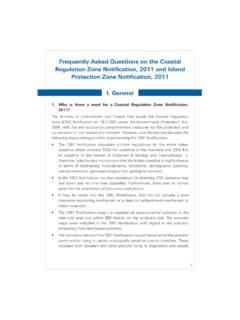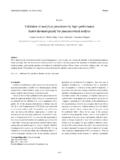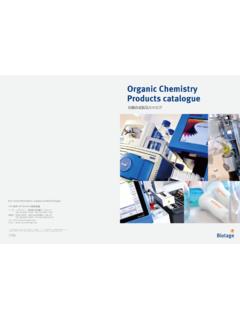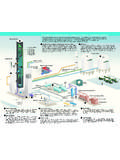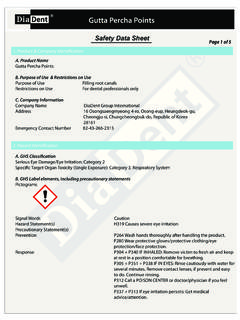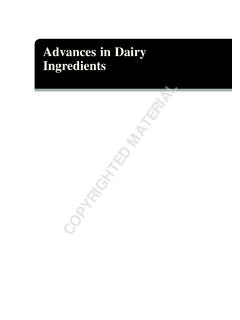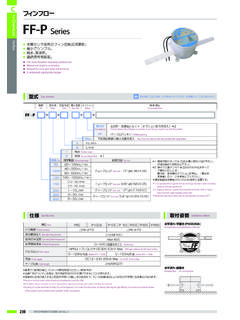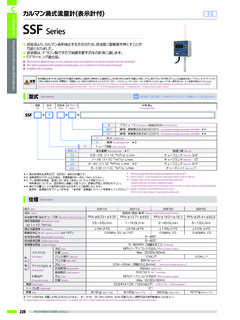Transcription of Annex 2 WHO good manufacturing practices: water …
1 67 Annex 2 WHO good manufacturing practices : water for pharmaceutical use11. Introduction Scope of the document Background to water requirements and uses Applicable guides 692. General principles for pharmaceutical water systems 693. water quality specifications General Drinking- water Bulk purified water Bulk highly purified water Bulk water for injections Other grades of water 724. Application of specific types of water to processes and dosage forms 725. water purification systems General considerations Production of drinking- water Production of purified water Production of highly purified water Production of water for injection(s) 776.
2 water storage and distribution systems General Materials that come into contact with systems for water for pharmaceutical use System sanitization and bioburden control Storage vessel requirements Requirements for water distribution pipework 817. Operational considerations Start-up and commissioning of water systems Qualification Continuous system monitoring Maintenance of water systems System reviews 868. Inspection of water systems 87 Further reading 881 The current document is a revision of WHO good manufacturing practices : water for pharmaceutical use, previously published in WHO Technical Report Series, No.
3 929, Annex 3, 675/2/12 6:21 PM68 WHO Technical Report Series No. 970, 2012 WHO Expert Committee on Specifications for pharmaceutical Preparations Forty-sixth report 1. Scope of the !e guidance contained in this document is intended to provide information about the available speci"cations for water for pharmaceutical use (WPU), guidance about which quality of water to use for speci"c applications, such as the manufacture of active pharmaceutical ingredients (APIs) and dosage forms, and to provide guidance on good manufacturing practices (GMP) regarding the design, installation and operation of pharmaceutical water systems.
4 Although the focus of this document is on water for pharmaceutical applications, the guidelines may also be relevant to other industrial or speci"c uses where the speci"cations and practices can be : !is document does not cover water for administration to patients in the formulated state or the use of small quantities of water in pharmacies to compound individually prescribed !e GMP guidance for WPU contained in this document is intended to be supplementary to the general GMP guidelines for pharmaceutical products published by WHO (WHO Expert Committee on Speci!)
5 Cations for pharmaceutical Preparations. "irty-seventh report. Geneva, World Health Organization, 2003 (WHO Technical Report Series, No. 908), Annex 4). !is document refers to available speci"cations, such as the pharmaco-poeias and industry guidance for the use, production, storage and distribution of water in bulk form. In order to avoid confusion it does not attempt to duplicate such !e guidance provided in this document can be used in whole or in part as appropriate to the application under Where subtle points of di#erence exist between pharmacopoeial speci"-cations, the manufacturer will be expected to decide which option to choose in accordance with the related marketing authorization submitted to the national medicines regulatory Background to water requirements and water is the most widely used substance, raw material or starting material in the production.
6 Processing and formulation of pharmaceutical products. It has unique chemical properties due to its polarity and hydrogen bonds. This means it is able to dissolve, absorb, adsorb or suspend many different compounds. These include contaminants that may represent hazards in themselves or that may be able to react with intended product substances, resulting in hazards to 685/2/12 6:21 PMAnnex Control of the quality of water throughout the production, storage and dis-tribution processes, including microbiological and chemical quality, is a major con-cern.
7 Unlike other product and process ingredients, water is usually drawn from a system on demand, and is not subject to testing and batch or lot release before use. Assurance of quality to meet the on-demand expectation is, therefore, essential. Additionally, certain microbiological tests may require periods of incubation and, therefore, the results are likely to lag behind the water use. Control of the microbiological quality of WPU is a high priority. Some types of microorganism may proliferate in water treatment components and in the storage and distribution systems.
8 It is crucial to minimize microbial contami-nation by proper design of the system, periodic sanitization and by taking appro-priate measures to prevent microbial Di#erent grades of water quality are required depending on the route of administration of the pharmaceutical products. Other sources of guidance about di#erent grades of water can be found in pharmacopoeias and related Applicable In addition to the speci"c guidance provided in this document, the Further reading section includes some relevant publications that can serve as additional background material when planning, installing and using systems intended to provide General principles for pharmaceutical water pharmaceutical water production, storage and distribution systems should be designed.
9 Installed, commissioned, quali"ed and maintained to ensure the reliable production of water of an appropriate quality. It is necessary to validate the water production process to ensure the water generated, stored and distributed is not beyond the designed capacity and meets its speci" The capacity of the system should be designed to meet the average and the peak $ow demand of the current operation. If necessary, depending on planned future demands, the system should be designed to permit increases in the capac-ity or designed to permit modi"cation.
10 All systems, regardless of their size and capacity, should have appropriate recirculation and turnover to assure the system is well controlled chemically and microbiologically. The use of the systems following initial validation (installation quali"cation (IQ), operational quali"cation (OQ) and performance quali"cation (PQ)) and a%er any planned and unplanned maintenance or modi"cation work should be approved by the quality assurance (QA) department using change control documentation. 695/2/12 6:21 PM70 WHO Technical Report Series No.










